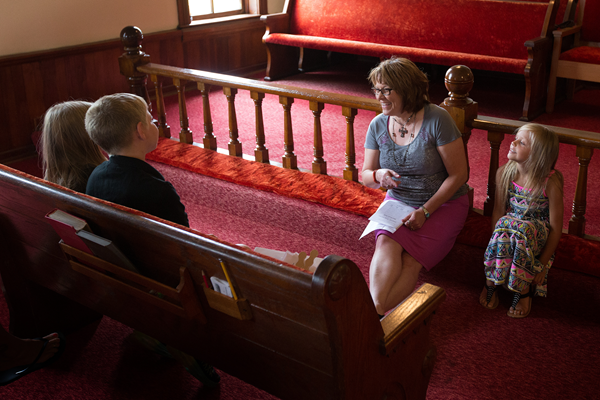Are children's sermons more than adult entertainment? Have you ever thought of the importance or relevance of a children's sermon to the full worship experience?
The difference is the target audience and the style of delivery. Actually, a children's sermon is more challenging to prepare and deliver because you have less time, a much more active audience and a smaller vocabulary from which to choose.
How can you deliver a quality children's sermon while keeping it kid-friendly?
Keep your audience in mind.
Direct your children's sermon toward 2-year-olds through second-graders. Choose words carefully and in accordance with your participants. Young children receive words and illustrations literally. Most have not yet developed the skills to make sense of highly developed metaphors, concepts or symbolism.
Use illustrations and stories relevant to the children with whom you are speaking.
For example, if the Scriptural focus is Jesus at the Wedding Feast in Galilee, remember most young children have little understanding of a wedding reception. However, they probably will have experienced and will understand a party.
Children learn by doing, experiencing and seeing what is happening around them.
Seek ways to share your message through visual and tactile stimulation while providing a verbal message to reinforce your point. Usually children's sermons are primarily verbal with an occasional visual or physical component. Strive to reverse this trend. Auditory learning is a secondary way of learning for young children.
If, for instance, the story emphasizes God's love for the world, bring a globe and heart stickers for children to place on the globe. Help children to complete the statement
"God loves everyone who lives in _____ (wherever the children place the heart sticker)."
When the focus of the sermon is on repentance, get up and illustrate this message through actions. Ask the children physically to go with you one way (the wrong way) and then to turn around and go the correct way.
Do not ask open-ended questions as you engage with children.
Children will speak their minds and are notorious for throwing your thoughts "off balance." Engage children through activity and movement to emphasize your main idea.
Keep it simple!
Prepare and deliver a single thought or main idea. To check yourself as you prepare, try to write one sentence that encapsulates the point of your sermon. If you cannot do so, you have fallen into the trap of trying to cover too many ideas and missing the boat on all of them.
Lead children in spiritually forming disciplines.
As has been mentioned earlier, children learn best by doing. Teach children the spiritual disciplines through practicing these disciplines. Invite children to share with you in prayer by repeating short phrases after you. Rather than talking about tithing and offerings to God, invite children to bring their tithes and offerings to the altar.
Never underestimate the importance of the children's sermon
What you say makes a spiritual impact on the lives of those gathered. Make preparation for the delivery of a children's sermon a top priority covered in prayer.
Remember: The children's sermon is of equal value to the "real" sermon that is delivered each week from the pulpit.
— Foster-Beckerleg served as Safe Sanctuaries and Family Ministries for the Mississippi Conference and now is the Pastor of Congregational Care & Adult Spiritual Formation, Covenant United Methodist Church in High Point, North Carolina.

